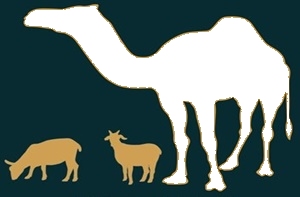Le contrôle environnemental et neuroendocrinien de l’activité saisonnière de la reproduction chez le dromadaire
Résumé
Le dromadaire (Camelus dromedarius), qui est un mammifère bien adapté au désert est une espèce à reproduction saisonnière. Sa saison sexuelle a lieu durant l’hiver et le printemps. Ces périodes coïncident avec l’abondance des ressources alimentaires et des conditions climatiques favorables pour la survie de la progéniture. Toutefois les mécanismes impliqués dans le contrôle de cette saisonnalité restent encore mal élucidés. L’objectif de cette revue est de décrire les caractéristiques de la reproduction chez le dromadaire. Cela inclue la distribution géographique de sa saison sexuelle et son déclenchement possible par plusieurs paramètres environnementaux physiques, notamment la température ambiante, la photopériode et la quantité de précipitations. De plus, plusieurs aspects de cette saisonnalité ont été discutés chez le mâle et la femelle. Finalement, cette revue analyse les facteurs neuroendocriniens impliqués dans la saisonnalité de reproduction, notamment, le rôle putatif de deux neuropeptides hypothalamiques, le kisspeptin et le (Arg) (Phe) peptide apparenté.
Mots-clés: Dromadaire, saisonnalité de reproduction, précipitations, photopériode, température ambiante, disponibilité alimentaire, kisspeptin, RFRP.
Téléchargements

Téléchargements
Publié-e
Comment citer
Numéro
Rubrique
Licence

Revue Marocaine des Sciences Agronomiques et Vétérinaires est mis à disposition selon les termes de la licence Creative Commons Attribution - Pas d’Utilisation Commerciale - Partage dans les Mêmes Conditions 4.0 International.
Fondé(e) sur une œuvre à www.agrimaroc.org.
Les autorisations au-delà du champ de cette licence peuvent être obtenues à www.agrimaroc.org.

